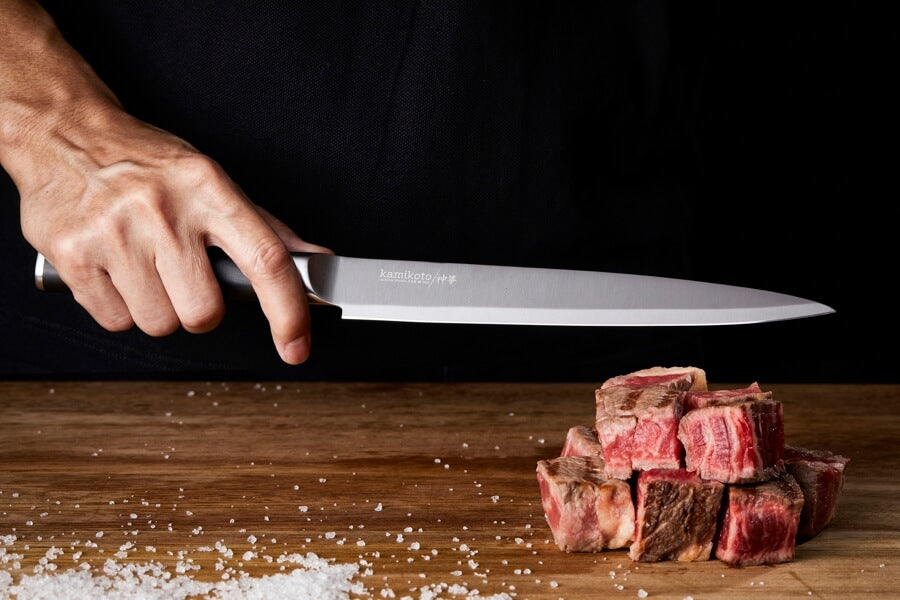A Santoku knife is a vital asset in many chefs' kitchens, both professional and home. Its versatility, precision, and unique design make it ideal for everything from slicing fresh vegetables to crafting fine cuts of meat. However, the importance of proper maintenance cannot be underestimatedstarting with knowing how to clean a Santoku knife. Without the right care, even the finest kitchen knives can become dull, rusted, or compromised over time.
This guide will explore the essential steps and techniques required to clean and maintain your Santoku knife without inflicting unnecessary damage, ensuring it remains a dependable culinary ally for years to come.

Why Proper Knife Cleaning Matters
Both professional chefs and culinary enthusiasts realize the significance of taking meticulous care of their tools. A clean Santoku knife goes beyond just hygiene; it contributes to the knifes longevity and optimal performance. When knives arent properly cleaned, they are more susceptible to bacteria buildup, dullness, and corrosion. Heres why taking a few extra moments to clean is worthwhile:
- Hygiene: Thoroughly cleaning your knife helps prevent foodborne illnesses and cross-contamination.
- Longevity: Proper cleaning helps prevent premature wear on the blade and rust formation.
- Performance: A residue-free blade guarantees sharpness and accuracy in your slicing and dicing tasks.
Step-By-Step: How to Clean a Santoku Knife
Cleaning your knife is more than just rinsing it under the tap; it requires a structured approach to protect its sharp edge and premium material. Heres a breakdown of the process:
1. Clean Immediately After Use
A key rule in knife maintenance is to clean your knife right after using it. Leaving food particles or moisture on the blade for a long time can lead to stains and rust formation.
What you'll need:
- Warm water
- Mild dish soap
- Soft sponge or microfiber cloth
How to do it: Carefully scrub both sides of the blade with soap and a sponge. Steer clear of abrasive scouring pads since they can scratch the metallic surface.
2. Avoid the Dishwasher
While it might be tempting to throw your Santoku knife into the dishwasher, resist that temptation. The harsh detergents and powerful water jets can dull the blade and damage the handle.
Instead, opt for manual cleaning methods to keep your knife in excellent condition.
3. Dry Immediately
After washing, it's crucial to dry your knife thoroughly. Even stainless steel blades aren't fully impervious to water damage.
Pro tip: Use a clean, dry microfiber cloth to gently pat the blade dry, ensuring no water spots or stains persist. Allowing a knife to air dry increases the risk of corrosion.
4. Oil the Blade
If your Santoku knife is made of carbon steel, regular oiling is necessary to avoid rust. Use food-safe mineral oil to lightly coat the blade for added protection.
Discover why carbon steel blades demand a little extra care in this comprehensive knife care guide.
5. Store Properly
To protect against scratches and deformation, your knife should be stored correctly. Knife blocks, magnetic strips, or blade guards are excellent choices. Avoid tossing it into a drawer with other utensils.
Common Cleaning Mistakes to Avoid
While learning how to clean a Santoku knife is essential, knowing what to avoid is equally important. Here are some common missteps to steer clear of:
- Soaking the Knife: Leaving any knife submerged in water for long periods can warp the handle and cause rusting.
- Using Abrasive Materials: Scouring pads and harsh cleaners can damage the blade's finish and dull its edge.
- Skipping Drying: Allowing knives to air dry raises the risk of rust and water spots.
Additional Knife Care Tips
Keeping your knife clean is one part of its maintenance. To ensure it performs at its best, consider these additional tips:
Keep It Sharp
A sharp knife is a safe knife. Regular honing and sharpening will maintain your blade's edge, reducing the chance of accidents. For expert results, check out this sharpening guide.
Avoid Cutting on Hard Surfaces
Steer clear of cutting on glass or metal surfaces, as they can dull your blade swiftly. Instead, use wooden or high-quality plastic cutting boards.
Separate Knives for Different Tasks
Using the same knife for various taskslike cutting raw meat and then slicing vegetables without cleaningcan lead to contamination and unneeded wear on your blade.
:max_bytes(150000):strip_icc()/faw-knife-sharpeners-aug-24-test-chefs-choice-angleselect-professional-electric-nsimpson-7-adffc06ba0134f72999f4a4d85c657a6.jpeg)
FAQs: All Your Queries on How to Clean a Santoku Knife, Answered
1. Can I use dish soap to clean my Santoku knife?
Yes, mild dish soap is safe and effective for cleaning knives. Always choose a soft sponge to prevent scratching the blade.
2. Is it okay to soak my knife in water?
No, soaking can damage the handle and increase the risk of rust on the blade. Clean your knife by hand and dry it immediately.
3. Do I need to oil my Santoku knife?
If your knife is made of carbon steel, oiling is crucial to deter rust. Stainless steel knives may not require oiling but can still benefit from occasional treatment.
By following these cleaning techniques and maintenance practices, your Santoku knife will thrive in the kitchen, making meal preparation safer and more enjoyable. Treat your tools with care, and you'll reap the rewards of expert-level knife maintenance!
For additional guidance on knife cleanliness, check out this external link. Remember to also explore sharpness differences, chef set benefits, suitability for pros, and Henckels options for more insights!
This article contains affiliate links. We may earn a commission at no extra cost to you.


























